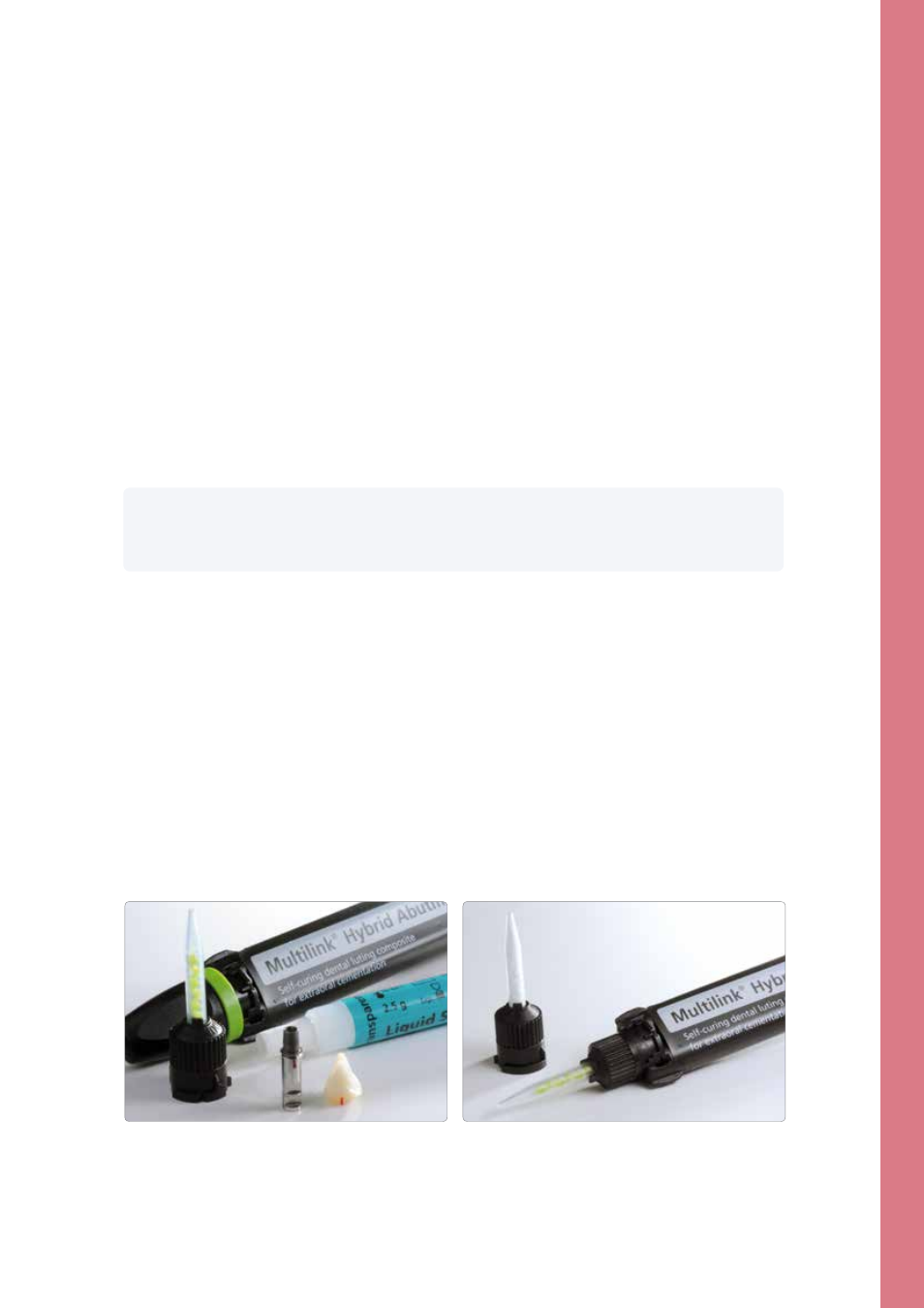Ivoclar Vivadent IPS e.max CAD Abutment Solutions User Manual
Page 49

49
Application Procedure
– Permanent Cementation
Cementation with Multilink
®
Hybrid Abutment
The following instructions must be observed in the cementation procedure:
– The cleaned and conditioned components (ceramic structure, Ti base) are laid out ready for cementation.
– The subsequent cementation procedure must be carried out quickly and without interruption. The working
time of Multilink Hybrid Abutment is approximately 2 min at 23 °C (± 1 °C) or 73 °F (± 1.8 °F).
– As a general rule, a new mixing tip is attached to the Multilink Hybrid Abutment syringe prior to each use.
– Apply a thin layer of Multilink Hybrid Abutment directly from the mixing syringe to the bonding surface of the Ti base
and the bonding surface of the ceramic structure.
– The mixing tip is left on the Multilink Hybrid Abutment syringe until the next use. The remaining cement polymerizes in
the tip and functions as a seal.
– Place the ceramic structure on the Ti base in such a way that the position markings are aligned.
– Press the parts lightly and evenly together and check the correct relative position of the components (transition Ti base/
ceramic structure).
– Subsequently, press the parts tightly together for 5 s.
– Carefully remove excess in the screw channel, e.g. with a Microbrush or brush, using rotary movements.
– Glycerine gel is applied (e.g. Liquid Strip) on the cementation joint to prevent the formation of an inhibition layer. The
glycerine gel must be applied cautiously to avoid blending it with or displacing the composite. Make sure to leave the gel
on the cementation joint until polymerization is complete.
– Next, the luting composite is completely auto-polymerized within 7 min.
– Important: Do not move the components until Multilink Hybrid Abutment has completely cured. They can be
held immobile with e.g. diamond-coated tweezers.
– After the completion of auto-polymerization, rinse off the glycerine gel with water.
– Make sure to cautiously polish the cementation joint with rubber polishers at a low speed (< 5,000 rpm) to
avoid overheating.
– Remove any cement residue left in the screw channel with suitable rotating instruments.
– Clean the restoration with ultrasound in a water bath or with the steam jet.
Important:
– Important: Excess must not be removed before curing has started, i.e. 2-3 minutes after mixing. For the
purpose, a suitable dental lab instrument (e.g. Le Cron) is used. The components are held in place with
light pressure in the process.
The cleaned and conditioned components are laid out ready for cementation.
A new mixing tips is attached to the Multilink Hybrid Abutment prior to each use.
The Multilink Hybrid Abutment mixing syringe is attached.
